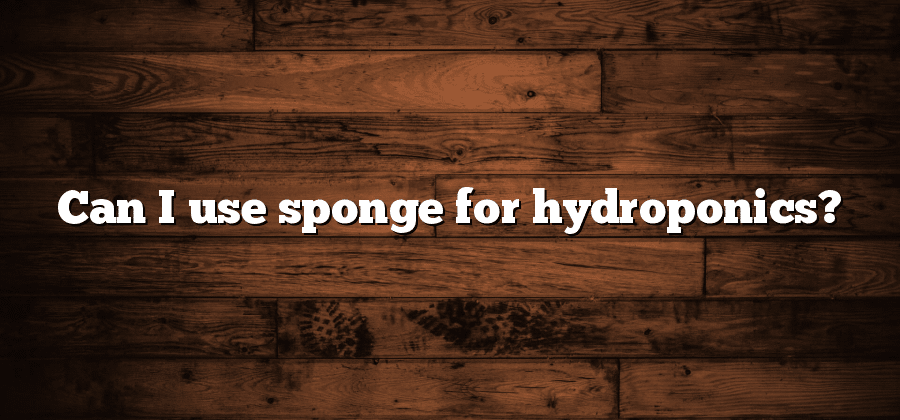2. Preventing algae growth
Algae growth can be a persistent issue in hydroponic systems, leading to reduced plant performance and nutrient deficiencies. To combat this problem, several preventive measures can be employed. One effective method is to ensure proper light management. Algae thrive in bright and prolonged light conditions, so shading the system or using light-blocking materials can significantly reduce their growth. Another approach is maintaining a healthy balance of nutrients in the solution. Algae flourish in nutrient-rich environments, so regular monitoring and adjustment of nutrient levels can help prevent excessive growth. Additionally, ensuring proper system cleanliness by regularly cleaning and sterilizing equipment can go a long way in preventing algae buildup.
In addition to light management and nutrient control, implementing a well-designed filtration system can be instrumental in preventing algae growth. The installation of filters helps to remove any organic matter or debris from the nutrient solution, which can serve as a food source for algae. By keeping the solution clean and free from potential algae food sources, the risk of algae growth can be greatly diminished. Furthermore, some hydroponic growers opt for the use of commercial algaecides or natural remedies like hydrogen peroxide to further inhibit the growth of algae. However, it is essential to exercise caution when using any chemical treatments and to carefully follow the recommended dosage to avoid any negative effects on plants or the overall hydroponic system.
3. Addressing nutrient deficiencies
Nutrient deficiencies can pose a significant challenge to the success of any hydroponic system. Without the right balance of essential elements, plants may exhibit stunted growth, yellowing leaves, or even die prematurely. To address these deficiencies, it is crucial for hydroponic growers to closely monitor and adjust the nutrient levels in their system.
One effective method to address nutrient deficiencies is through the use of a nutrient solution. This solution is carefully formulated with the necessary elements that plants need for healthy growth. By regularly testing the solution’s pH and nutrient levels, growers can ensure that their plants are receiving optimal nutrition. Adjustments can be made by adding specific nutrient concentrates, such as potassium or iron, to the solution as needed. The key is to achieve a balanced nutrient profile that meets the requirements of the specific plants being grown.
Sponge for Different Hydroponic Systems
Hydroponic systems have gained popularity in recent years as a way to grow plants without the need for soil. One important component of these systems is the use of a sponge. Sponges play a crucial role in providing support to plants, holding moisture, and ensuring proper nutrient uptake.
In the wick system, sponges are commonly used as a medium to hold the plant’s roots and provide a constant supply of water and nutrients. The sponge acts as a wick, absorbing water from a reservoir and transferring it to the roots of the plants. This ensures that the plants have a consistent supply of water and nutrients, promoting healthy growth and development.
Similarly, in the water culture system, sponges are used to support the plant’s roots. The roots are inserted into the sponge, which is then placed in a solution of water and nutrients. The sponge not only provides support but also helps to maintain the right balance of moisture for the roots. This system allows for maximum oxygenation of the roots, promoting nutrient absorption and overall plant health.
In both the wick system and the water culture system, choosing the right sponge is crucial for the success of the hydroponic setup. Sponges should be porous, lightweight, and have good water-holding capacity. Additionally, they should be pH neutral to ensure that the nutrient solution remains at the optimal pH level for plant growth.
As hydroponic systems continue to evolve and become more sophisticated, the role of sponges in supporting plant growth remains an essential component. Whether you opt for a wick system or a water culture system, selecting the right sponge can make a significant difference in the overall health and productivity of your hydroponic garden.
1. Wick system
The wick system is one of the simplest and most low-maintenance hydroponic systems available. It is popular among beginner growers due to its ease of use and affordable setup. In this system, a wick made of a porous material such as cotton or nylon is used to transfer nutrient solution from a reservoir to the plant’s roots.
The wick system is a passive system, meaning there is no need for pumps or electricity to power it. The wick acts as a capillary, absorbing the nutrient solution and delivering it to the plant’s roots. This setup allows for a constant and slow delivery of nutrients, ensuring that the plants receive a consistent supply without the risk of overfeeding. With proper care and attention, the wick system can provide excellent results for a variety of plants, making it a reliable choice for hydroponic enthusiasts.
2. Water culture system
Water culture system is a commonly used hydroponic system in which plants are suspended in a nutrient-rich solution. This system involves the use of a reservoir that holds the nutrient solution and an air pump that supplies oxygen to the root zone. The plants are placed in net pots or baskets, with their roots dangling directly into the nutrient solution. The main advantage of the water culture system is its simplicity and low cost compared to other hydroponic systems.
In the water culture system, it is crucial to ensure that the nutrient solution is well-oxygenated to promote healthy root growth. This is why an air pump is an essential component of this system. The air pump continuously delivers oxygen to the roots, preventing them from becoming waterlogged and deprived of oxygen. It is important to monitor the oxygen levels in the nutrient solution regularly to maintain optimal conditions for plant growth. Additionally, the nutrient solution should be regularly replaced or supplemented to ensure that the plants receive a balanced supply of essential nutrients.






